- Home
- Eric Flint
Grantville Gazette 43 Page 20
Grantville Gazette 43 Read online
Page 20
There are several expedients for mitigating irreversibilities:
Jacketing. When steam enters the cylinder, it meets a relatively cold surface, and condensation can occur, speeding heat loss and also increasing corrosion. Hot air or steam may be introduced into an annular casing surrounding the cylinder, to warm the cylinder walls, and prevent this. The net reduction in steam consumption is on the order of 2–15%. (Ennis 307); in terms of efficiency ratio, the increase is 3–5 percentage points. (399).
Compound expansion. In compounding, the steam is expanded in a series of cylinders. In double expansion, the exhaust of the high pressure cylinder is fed into the inlet of the low pressure cylinder. Triple and quadruple expansion engines are analogously defined.
Compounding has no effect on the theoretical efficiency, but does increase the real-life efficiency, by reducing heat losses through the cylinder wall. (Ennis 319). Ennis (399) reported that for saturated steam, the efficiency ratio increased from 40% (simple) to 50% (double) and 60% (triple) for non-condensing engines, and from 60% (simple) to 65% (compound) and 80% (triple) for condensing ones. Unfortunately, compound engines are larger than their simple counterparts. (Semmens 162).
In stationary plants, compounding is often combined with reheating for increased efficiency.
Superheating also reduces condensation, and a simple engine using superheated steam could be as economical as a compound with saturated steam. (Ennis 402). Superheating also obviates the need for jacketing. (405).
Uniflow. In a normal steam engine, steam enters the cylinder at one end and, expanding, leaves at the other, and then the direction of steam expansion is reversed. In a uniflow system, steam always enters the cylinder at an end but is exhausted from the center. This means that the ends always stay hot and the center cold, so heat losses are reduced. Unfortunately, the fact that the center remained cool meant that the piston could seize up there. There were other mechanical problems, too. Abner Doble declared that it was "unsuited for use in a motor vehicle." (SCCGB).
It must be emphasized that all of these modifications for increasing efficiency also increase the initial cost, and often also the maintenance costs, and these must be weighed against the fuel cost savings.
****
The highest efficiency I have seen claimed for a mobile steam power plant is from Cyclone Technologies: "To date the net reproducible cycle efficiency of the Cyclone engine is above 28%, with 31.5% efficiency achieved on the company’s small two-cylinder engine, and 35% confidently predicted to be achieved on the larger 6 cylinder “Mark V” model in the immediate future on the dynamometer." (Crank). However, the materials requirements (withstanding 3200 psi pressure, boiler temperature 1200oF, exhaust 320oF) are severe, despite use of water as a lubricant. And the engine was developed post-RoF (first patent application filed in 2005).
Boiler Efficiency
The energy losses in the boiler include
—unburnt fuel (bottom ash and fly ash)
—incomplete combustion (carbon monoxide)
—(latent) heat wasted by vaporizing water in intake air, in fuel, or formed by combustion of hydrogen in fuel
—(sensible) heat carried off by firebox exhaust gas
—radiation and convection from boiler to surroundings
The greater the combustion rate, the lower the boiler efficiency. Empirically, coal-fired boiler efficiency declines almost linearly as the firing rate increases. For SAR 25NC, boiler efficiency dropped from a bit above 70% at 5,000 kg evaporation/hour to 37% at the grate limit of 32,500. (Wardale 81). The grate limit is the firing rate at which evaporation (steam production) is maximized.
It's instructive to look at where the heat losses are coming from. Table S4 provides a breakdown, and related information, for a Consolidation (2-8-0) freight locomotive, built 1900, with a 200 psi, single expansion engine without superheat.
(Fry and PaRR, data on Series 200, #734). grate area 33.76 ft2; total heating surface, fire side 2541.22 ft2; heating surface/grate area: 75.27; avg. heat value of coal, 14,907 BTU/lb.
*using best fit equation.)
We can see that the decline in efficiency for this freight locomotive is almost entirely attributable to unburnt coal, and we can see the same trend in data for compound expansion and superheated locomotives.
Porta's gas producer combustion system (GPCS) was intended to burn coal (or other solid fuel) more efficiently. It was, in essence, a primitive coal gasification scheme. Perhaps 30% of the air needed for complete combustion was introduced through the grate, together with a small percentage of the exhaust steam; and the reaction produced carbon monoxide and hydrogen. The reactions of the carbon with the steam are endothermic, serving to reduce the temperature, reducing the likelihood that the bottom ash would fuse into clinkers. And the reduction of the upward draft reduced how much ash was carried upward into the smokestack.
That left the problem of supplying enough air to complete combustion. The remaining (secondary) air was admitted at high velocity through openings at the top ("overfire") and high on the sides. These were position so that the secondary air mixed with the combustion gases, without disturbing the firebed. (Wardale 78ff).
Because the openings are small, a high efficiency exhaust system (Lempor, Kylpor) is needed to provide sufficient suction without onerous back pressure on the pistons. In a cyclonic GPS, the air and steam are injected in such a way as to cause a swirling action. Porta was able to maintain 78–80% combustion efficiency at maximum output, as opposed to under 50% for a conventional locomotive boiler. (trainweb.org).
As far as I know, GPCS was never used on a working U.S. locomotive (and only sporadically used elsewhere), so the information about it in Grantville is likely to be limited. Hence, even if the steamheads know about it, they are still going to need to work out all the wicked little engineering details in both the GPCS (size and location of airholes, etc.) and the matching exhaust (cross-sections of the mixing chamber, etc.). One source says that "while the GPCS is a simple concept, it requires careful attention to its design and tuning to ensure its proper operation." (trainweb.org).
****
Once we deal with the problem of unburnt coal, we might want to try to reduce how much heat is carried off into the smokebox by combustion gases, that being the largest "fixed" heat loss. We can try to increase the heating surface, and engineer the fire tubes to transfer heat more efficiently to the boiler water.
Superheating does reduce the loss of heat in escaping combustion gas. For the "Schenectady No. 3," working at the normal maximum evaporation rate (12; reached in test 106 at boiler pressure 236 psig and 143oF superheat), 52% of the fuel energy was absorbed in the boiler and another 5% in the superheater, for an overall boiler efficiency of 57%. (Goss 53). On the late steam era SAR 25NC, perhaps one-fifth of the heat used to evaporate water was put to work in the superheater. (Wardale Fig. 21). Bear in mind that because space was limited, putting in a superheater meant reducing the heating surface of the boiler; 22.6% in the case of Schenectady No. 3. (Goss 92).
****
Stories will ultimately dictate how fast steam engine efficiency improves, but I would suspect that what we have in 1633–1635 for locomotives are simple expansion engines without superheating, and of boiler pressures not exceeding 200 psi. Figure a theoretical cylinder efficiency of up to 14% (non-condensing, for locomotives) or 19% (condensing at 0 psig, for airships). With an efficiency ratio of 70%, auxiliary efficiency 95%, and an overall boiler efficiency of 50%, we are talking about overall cylinder efficiency of 4.7% for locomotives and 6.3% for airships. If we are willing to accept a low firing rate, we might get overall boiler efficiency up to 70% and the airship engine overall efficiency up to 8.8%.
By 1636–1639, I imagine that there will be experimentation with compound expansion, superheating, feedwater heating and, if the steamheads in Grantville know enough about them, GPCS and Lempor exhausts. Once we get the kinks worked out, and I have no idea how long that will take, condensin
g engines might get up to about 14%. Combining this with high boiler pressures like those in steam cars might take us up as high as 18%.
Power-Weight Ratios for Historical Steam Powerplants
Weight is particularly a problem for steam propulsion; W/P (pounds/hp) for the powerplant on the Giffard airship was at least 100:1. Even the Cyclone Mark V—a supercritical pressure engine that existed only as a developmental prototype at the time of writing and is well beyond post-RoF engineering capabilities—has a W/P of 3.5 (350 pounds dry weight, 100 hp). (Crank).
****
The Grantville steamheads' practical experience is likely to be greatest with agricultural steam engines. The first portable steam engines (1849) had a very high W/P ratios; 4 hp was two tons (1000 lbs/hp), and cost $625. (Knapp). A Cooper "Common Farm Engine" (1875), 15 hp, 200 psi, had a weight of 7,000 pounds, for a W/P of almost 467, cost $1,350 in 1881. Note that the weight was primarily the powerplant, as the unit was mounted on cast iron wheels with no frame to speak of, other than the driver seat. (ASME). One comparison of traction engines cited W/P of almost 600 for steam traction, perhaps 225 for steel-wheeled vintage IC, under 200 for rubber-wheeled vintage IC, and under 100 for modern IC. (QuickIH 176). Elsewhere, Quick says that W/P for steam traction was 700–1000, and that IC traction was down to 200 by about 1930. (QuickAT 9).
The W/P ratio is more favorable for a more powerful engine, as boiler weight should be proportional to surface area and power to volume. However, the improvement isn't great. In 1898, for portable 100 psi boilers of the locomotive type, the boiler weight (without fittings) was 1.35 long tons at 4 hp (W/P 756) and 5.8 tons at 30 hp (433). (Hutton 285). A 25 hp locomotive-type boiler for 1880s oilfield use, mounted on a simple wheeled frame, weighed 6800–7600 pounds (W/P 272–304). (Pees). A Case 150 hp steam tractor (1905–7) weighed 36,000 pounds (W/P = 240). (Leffingwell 33).
****
Our largest body of data for mobile steam powerplants is for steam locomotives. There are, unfortunately, several problems with using that data as a guide for airship design.
First, the power is expressed relative to the locomotive weight, which of course includes the wheels, transmission and frame, and thus is not strictly comparable to auto engine weight. On the other hand, since a steam-powered airship can't stop to refill its tender with water every fifty miles like a steam locomotive, it has to have a condenser, and so the weight of the condenser must be charged against it—and that isn't included in locomotive weight.
Secondly, proponents of steam propulsion argue that there wasn't a strong incentive to minimize the weight of steam locomotives. A locomotive with too high a power-weight ratio will waste some of that power, because the product of the locomotive weight on the drivers and the coefficient of adhesion (typically about 0.25 for steel wheels on dry steel rail) determines the maximum "traction." Hence, there isn't incentive to reduce weight beyond a particular point.
Even so, I found that the ratio of locomotive weight to power was worse for diesel locomotives than for steam. The British Railroad Class 8 Duchess (1937; most powerful steam locomotive built in the UK) had a cylinder power/locomotive weight (P/LocoW) ratio of 39.9 hp/ton. Turning to diesel, the Deltic (1955) had one of 31.1, and the Class 67 (1999) of 33.1. (Blythman). While the above analysis makes steam look good, remember that these steam locomotives had non-condensing powerplants.
****
What about aircraft use, where a condenser is mandatory? Some preliminary development and design work was done by the US Navy's Committee on Experimental Power in the 1920s. (Wilson). It concluded that to minimize weight, a flash boiler (no storage space for water or steam) had to be used. Also, the combustion chamber couldn't be insulated with firebrick; a steel-walled air jacket was used instead. The boiler was intended to operate at 300–500 psi and 800–900oF. In one test, at 325 psig and 772oF, it evaporate 9450 pounds water/hour with 80% efficiency. The Committee estimated that the "finished weight" of the steam generator would be under 2 pounds generator weight/hp. It contemplated that this would drive a turbine that would be 1 pound/hp.
The catch was the condenser weight. A wing-type aircraft radiator weighs about 0.3 pounds/square foot, but a steam power plant requires 11.5 times the cooling area per hp-hr as an internal combustion engine. (Why? The radiator for a IC engine merely must keep the temperature within metallurgical limits. The one for a condensing steam engine must remove enough heat energy from the steam to convert it back to liquid form.) Hence, it would contribute over 3 pound/hp.
A typical aircraft would not in fact have enough wing area and hence there would also need to be a core-type radiator, which would increase drag as well as weight.
The conclusion was that a steam powerplant for aircraft would have 2–3 times the weight as an IC engine of the same power, but be only half as fuel-efficient.
In 1933, Besler flew a steam-powered aircraft for a short flight (10–15 minutes). Reportedly, it had a 2-cylinder, double acting 90o V piston engine with compound expansion, producing 150 hp at 1625 rpm, weighing 180 pounds. The monotube boiler (a Doble Model "F") operated at 1200 psig, 800oF and the spent steam entering the atmospheric condenser was 4 psig, 215oF. The "auxiliary equipment"(boiler, condensers, feedwater heaters, feed pump) weighed another 485 pounds, for a powerplant weight of 665 pounds and a W/P of 4.43 pounds/hp. (Flying on Steam). A second source (Light Steam Power) says that the engine was only 90 hp, implying a weight-power ratio of 7.38.pounds/hp.
Photographs show that Besler had just a small core-type condenser, and it may be surmised that the Besler steam plane disappeared into oblivion because its condenser was inadequate for sustained flight. (Self, FKP-priorart.htm).
During the 1930s, the Russians had at least eleven R&D projects for aviation steam turbines, and also purchased a Besler steam automobile "as a basis for designing a steam engine for aircraft." The projects didn't go well; the designed powerplants were too big and heavy to fit on the available airframes. (Harrison).
Now, putting a steam powerplant into an airship is more enticing. First of all, airship engines typically had higher W/Ps than aircraft engines. Secondly, while an airship doesn't have wings, it does have a lot of hull surface to accommodate a radiator. I am doubtful that a "hull surface" radiator would work with a non-rigid airship, as its hull is intended only for aerodynamic function, but it could with the keel of a semi-rigid, or even better the full hull of a rigid airship. So, with a semi-rigid or rigid airship, we don't need to worry about providing a core-type radiator. And 6 pounds/hp for the complete powerplant is tolerable, even if inferior to an IC system.
And then there is another possible twist: if steam is used to provide lift as well as propulsion, then the airship gas envelope serves as a condenser, and the weight of the condenser isn't "charged" against the powerplant at all. (FKP). We are then talking about a W/P of just 3 pound/hp. (Wilson). Of course, range is limited, as with a hot air airship, as fuel must be burnt to stay aloft, but there may still be a niche.
Weight Reduction Opportunities for Steam Powerplants
Steam Powerplants
In 1830–1870, wrought iron was the standard material for locomotive boilers, typically in a thickness of 5/16" for 100 psi operation. (White 97ff). Steel boilers were introduced in 1860, but initially brittleness caused by excess carbon was a problem, and even in 1870 they cost more than an equivalent iron boiler. Steel didn't become dominant until about 1890. Boiler tubes were copper (earliest), brass (from 1851), iron (from 1831) or steel (from 1860s), with iron being predominant in the late 19c. Fireboxes were copper (longer life with wood-burning locomotives), wrought iron (54% the weight and 13% the price of copper equivalent), or eventually steel (five times the life of iron).
Cast iron was the only material used to make cylinders during the nineteenth century. (White 206). Pistons were usually cast iron but occasionally wrought iron or even cast steel. (207–8). By 1913, there were a few cast steel cylinders in locomotive service. (Henderson). However, s
teel cylinders became an industry standard (Lamb 86), and they are featured on the SAR 25NCs.
There has been modest locomotive experimentation with aluminum, e.g., New York Central's Niagara (1945): "their boilers were made from nickel steel, their drivers were made of lightweight alloy steel, and aluminum was used on less strategic components to reduce weight." (Solomon 89).
For pressure vessels like a boiler or steam tube, the principal requirements are high yield strength (permitting high boiler pressure) and a high ratio of fracture toughness to yield strength (to satisfy leak detectably-before-break criteria). (Ashby 160ff). It is very important that these be evaluated at the operating temperature, not room temperature. The tubing is subjected to the same temperature, but the stress is less because of its smaller diameter. The inner firebox is exposed to the higher temperatures of combustion. Note that the thickness of pressure vessels must be proportional to the stress and thus to the pressure difference.
For the inner firebox, and the fire tubes inside the boiler, high thermal conductivity is an advantage. The higher strength of first iron and then steel made it possible to reduce the wall thickness, compensating for the higher thermal conductivity of copper. Of course, for the boiler wall and the steam pipes running from the boiler to the cylinders, you want low thermal conductivity. For all surfaces in contact with steam, corrosion resistance is advantageous. For the fire tubes, which conduct air rich in ash, abrasion resistance is also a plus. Ductility makes tubing easier to flange, and copper had the advantage there.

 The Grantville Gazette Volumn VI
The Grantville Gazette Volumn VI Grantville Gazette, Volume IX
Grantville Gazette, Volume IX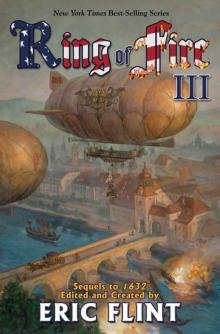 Ring of Fire III
Ring of Fire III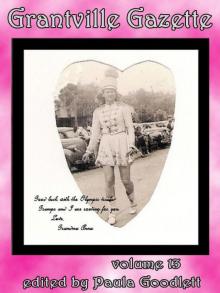 Grantville Gazette-Volume XIII
Grantville Gazette-Volume XIII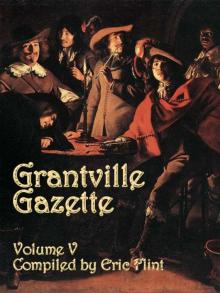 Grantville Gazette V
Grantville Gazette V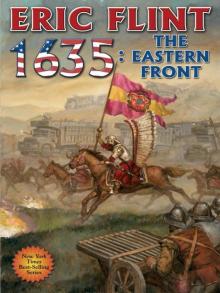 1635: The Eastern Front
1635: The Eastern Front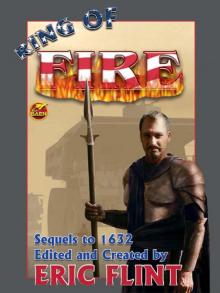 Ring of Fire
Ring of Fire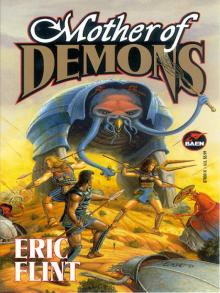 Mother of Demons
Mother of Demons 1824: The Arkansas War
1824: The Arkansas War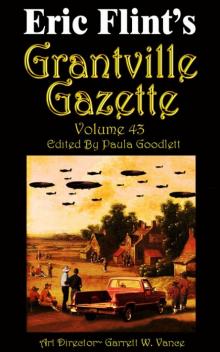 Grantville Gazette 43
Grantville Gazette 43 Forward the Mage
Forward the Mage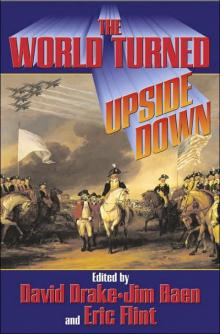 The World Turned Upside Down
The World Turned Upside Down Ring of Fire II
Ring of Fire II Boundary
Boundary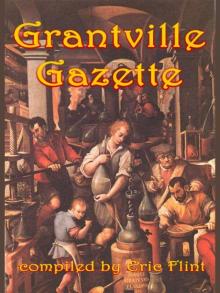 Grantville Gazette VI
Grantville Gazette VI 1812: The Rivers of War
1812: The Rivers of War 1633
1633 All the Plagues of Hell
All the Plagues of Hell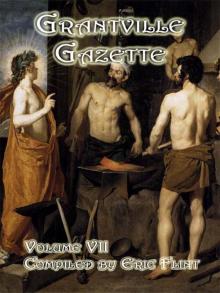 Grantville Gazette, Volume 7
Grantville Gazette, Volume 7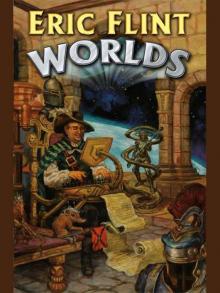 Worlds
Worlds 1632
1632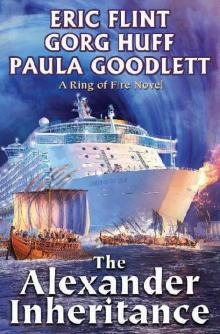 The Alexander Inheritance
The Alexander Inheritance Diamonds Are Forever
Diamonds Are Forever The Philosophical Strangler
The Philosophical Strangler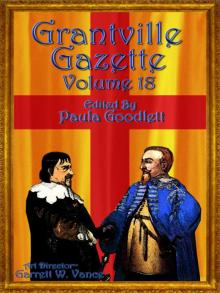 Grantville Gazette, Volume VIII
Grantville Gazette, Volume VIII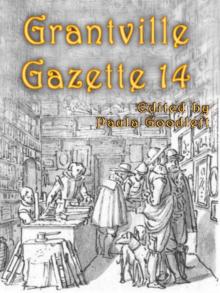 Grantville Gazette-Volume XIV
Grantville Gazette-Volume XIV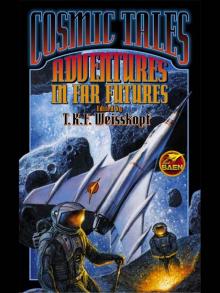 Genie Out of the Bottle
Genie Out of the Bottle Pyramid Scheme
Pyramid Scheme 1636- the China Venture
1636- the China Venture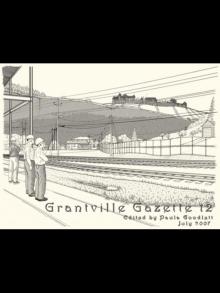 Grantville Gazette, Volume XII
Grantville Gazette, Volume XII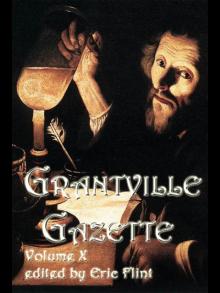 Grantville Gazette, Volume I
Grantville Gazette, Volume I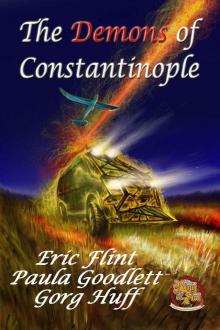 The Demons of Constantinople
The Demons of Constantinople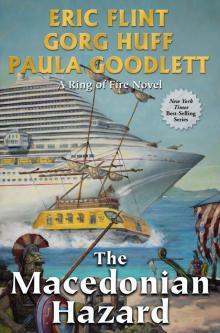 The Macedonian Hazard
The Macedonian Hazard 1634- the Galileo Affair
1634- the Galileo Affair The Shaman of Karres
The Shaman of Karres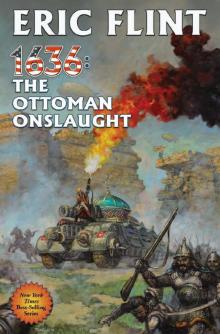 1636: The Ottoman Onslaught
1636: The Ottoman Onslaught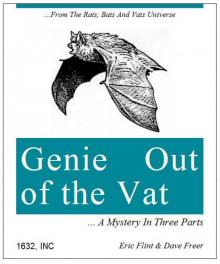 The Genie Out of the Vat
The Genie Out of the Vat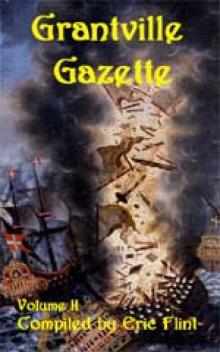 The Grantville Gazette Volumn II
The Grantville Gazette Volumn II 1636: The Saxon Uprising
1636: The Saxon Uprising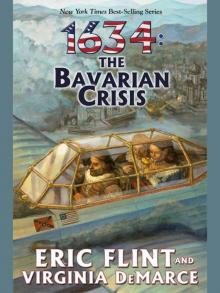 1634 The Baltic War
1634 The Baltic War 1636: Mission to the Mughals
1636: Mission to the Mughals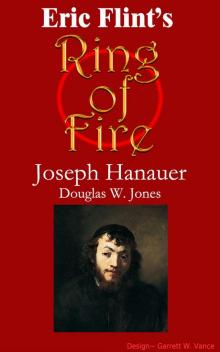 !632: Joseph Hanauer
!632: Joseph Hanauer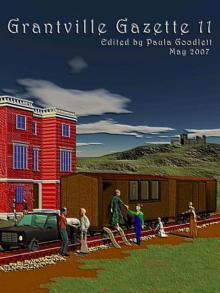 Grantville Gazette-Volume XI
Grantville Gazette-Volume XI 1637: The Peacock Throne
1637: The Peacock Throne 1636: The China Venture
1636: The China Venture The Rats, the Bats & the Ugly
The Rats, the Bats & the Ugly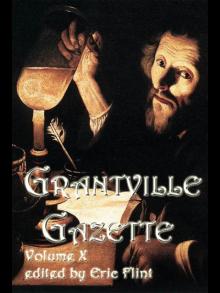 Grantville Gazette, Volume X
Grantville Gazette, Volume X The Course of Empire
The Course of Empire Pyramid Power
Pyramid Power 1636: The Devil's Opera
1636: The Devil's Opera Ring of Fire IV
Ring of Fire IV Grantville Gazette. Volume XX (ring of fire)
Grantville Gazette. Volume XX (ring of fire)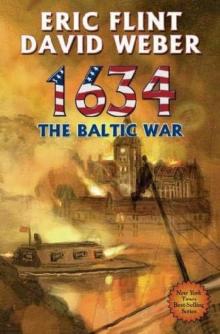 1634: The Baltic War (assiti chards)
1634: The Baltic War (assiti chards) The tide of victory b-5
The tide of victory b-5 1634: The Ram Rebellion
1634: The Ram Rebellion The Rats, the Bats and the Ugly trtbav-2
The Rats, the Bats and the Ugly trtbav-2 Castaway Resolution
Castaway Resolution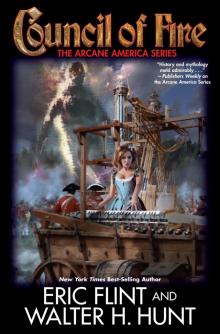 Council of Fire
Council of Fire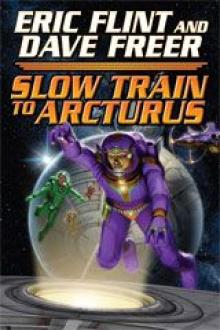 Slow Train to Arcturus
Slow Train to Arcturus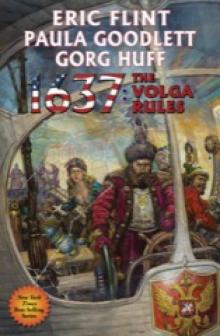 1637_The Volga Rules
1637_The Volga Rules Boundary b-1
Boundary b-1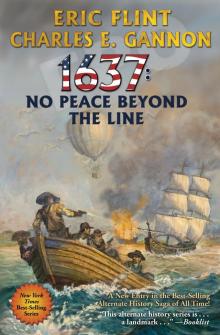 1637: No Peace Beyond the Line
1637: No Peace Beyond the Line The Sorceress of Karres
The Sorceress of Karres Destiny's shield b-3
Destiny's shield b-3 In the Heart of Darkness b-2
In the Heart of Darkness b-2 Grantville Gazette.Volume 22
Grantville Gazette.Volume 22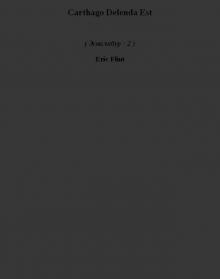 Carthago Delenda Est э-2
Carthago Delenda Est э-2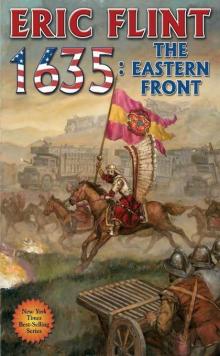 1635: The Eastern Front (assiti shards)
1635: The Eastern Front (assiti shards) 1812-The Rivers of War
1812-The Rivers of War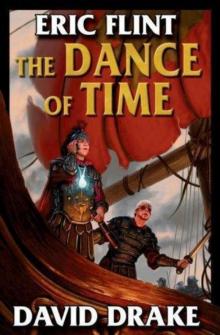 The Dance of Time b-6
The Dance of Time b-6 Belisarius II-Storm at Noontide
Belisarius II-Storm at Noontide Iron Angels
Iron Angels 1636:The Saxon Uprising as-11
1636:The Saxon Uprising as-11 1812: The Rivers of War tog-1
1812: The Rivers of War tog-1 Jim Baens Universe-Vol 1 Num 6
Jim Baens Universe-Vol 1 Num 6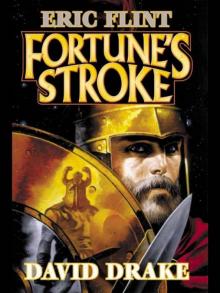 Fortune's stroke b-4
Fortune's stroke b-4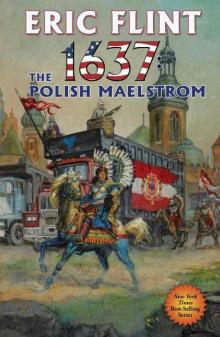 1637 The Polish Maelstrom
1637 The Polish Maelstrom The Shadow of the Lion hoa-1
The Shadow of the Lion hoa-1 Grantville Gazette.Volume XVI
Grantville Gazette.Volume XVI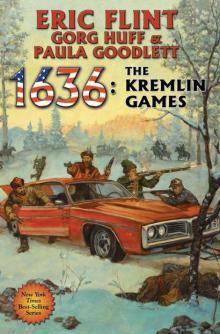 1636:The Kremlin games rof-14
1636:The Kremlin games rof-14 1824: The Arkansas War tog-2
1824: The Arkansas War tog-2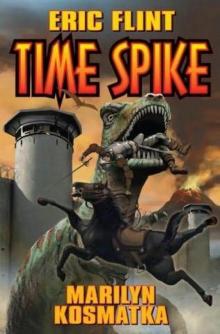 Time spike
Time spike Jim Baen's Universe-Vol 2 Num 1
Jim Baen's Universe-Vol 2 Num 1 Grantville Gazette.Volume VII
Grantville Gazette.Volume VII 1634: The Ram Rebellion (assiti shards)
1634: The Ram Rebellion (assiti shards) Grantville Gazette.Volume XVII (ring of fire)
Grantville Gazette.Volume XVII (ring of fire) Jim Baens Universe-Vol 2 Num 5
Jim Baens Universe-Vol 2 Num 5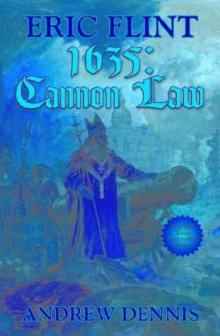 1635: The Cannon Law (assiti shards)
1635: The Cannon Law (assiti shards) Grantville Gazette. Volume 21
Grantville Gazette. Volume 21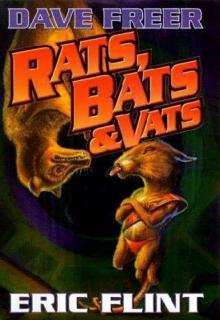 Rats, Bats and Vats rbav-1
Rats, Bats and Vats rbav-1 1636_The Vatican Sanction
1636_The Vatican Sanction The Aethers of Mars
The Aethers of Mars Jim Baen's Universe Volume 1 Number 5
Jim Baen's Universe Volume 1 Number 5 1634: The Bavarian Crisis (assiti chards)
1634: The Bavarian Crisis (assiti chards) Grantville Gazette Volume 24
Grantville Gazette Volume 24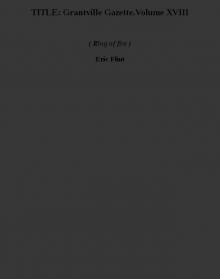 TITLE: Grantville Gazette.Volume XVIII (ring of fire)
TITLE: Grantville Gazette.Volume XVIII (ring of fire) Ring of fire II (assiti shards)
Ring of fire II (assiti shards) 1635:The Dreeson Incident (assiti shards)
1635:The Dreeson Incident (assiti shards) Jim Baen's Universe-Vol 2 Num 4
Jim Baen's Universe-Vol 2 Num 4 In the Heart of Darkness
In the Heart of Darkness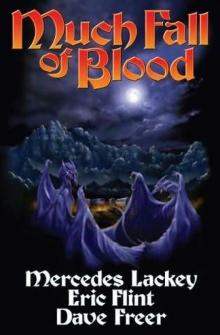 Much Fall Of Blood hoa-3
Much Fall Of Blood hoa-3